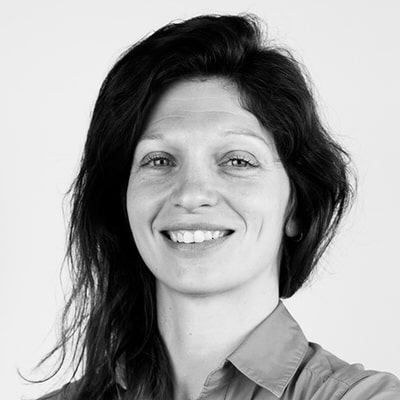Some people say that “seeing a movement is almost like doing it.” Vision and movement are indeed closely related: the same specific areas of the brain are activated when you see or make a movement. Based on the brain plasticity approach and “mirror therapy”, the French company Dessintey has developed “visuomotor simulation training” via its IVS devices in order to accelerate the rehabilitation of upper and lower limbs.
Principles of Mirror Therapy
For many years, researchers have been uncovering specific visuomotor neurons that are involved in vision and action planning and also in the production of movement. Many studies have shown that when we imagine or visualize a movement, we activate approximately the same areas of the brain as when we actually do the movement. There is a great link between movement, vision and imagination.
For example, if you are talking to someone in front of you who is holding a pen, the premotor areas of your brain related to manipulating objects are activated automatically, in a subconscious way, as if you were manipulating a pen yourself. Thus, each time we observe a representation of a movement, our brain automatically, and without effort, simulates this movement. This process supports rehabilitation.
One of the first professors behind this theory is Dr. Vilayanur Ramachandran, a neuroscientist and brain expert. Initially, he was interested in this technique for amputee patients who were subject to phantom limb pain.
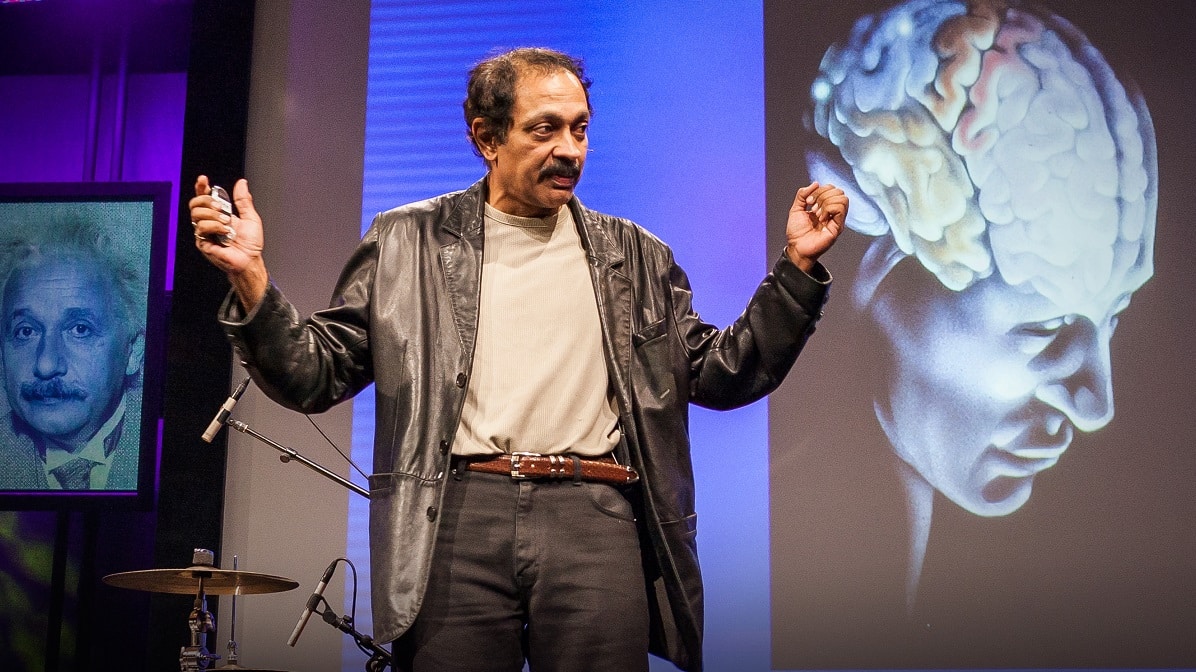
An amputee has built up a representation of his or her body as a whole, and from one day to the next, he or she finds himself or herself without a limb. The brain could say to itself “I no longer have this limb,” but no, it continues to maintain this image of the limb. The amputee will be able to continue to move the fingers or toes of the amputated limb.
At the same time, as the brain no longer sees this limb, the image degrades and distorts and it is this distortion that generates pain.
Professor Ramachandran’s idea was to make the brain believe, through the vision in a mirror of the other healthy limb, that the amputated limb still existed and was fine. And he noticed that this reduced the pain.
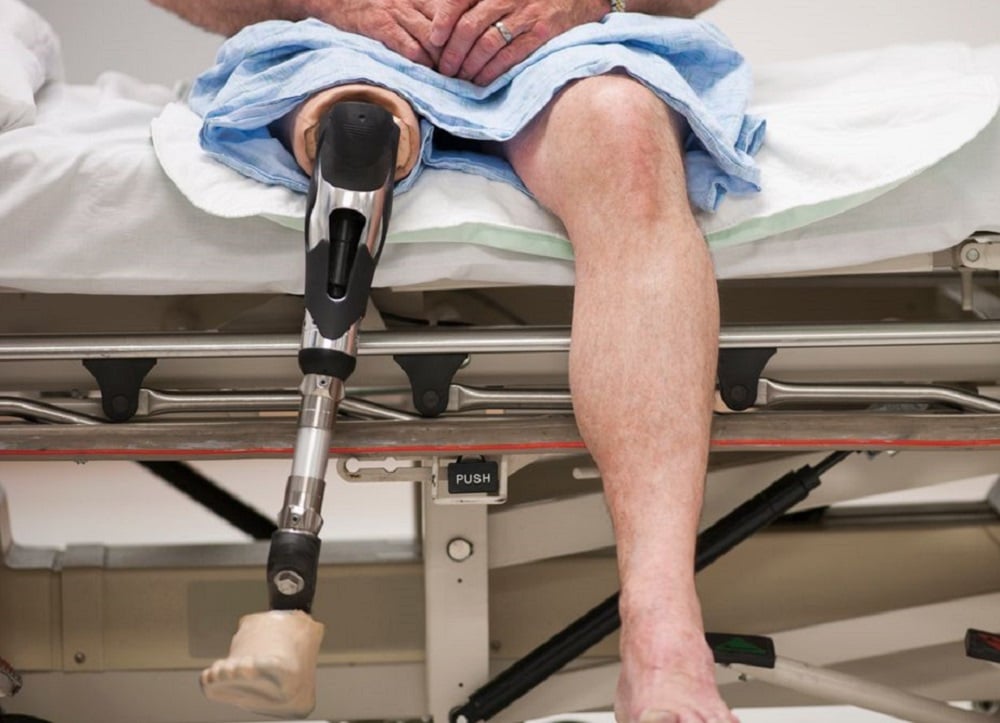
This was then taken up again for everything that had to do with motor recovery. We talk about mirror therapy or motor imagery or action observation. The notion of motor imagery is very much used by high-level athletes who, by imagining their movements and breaking them down in their heads, create a form of training.
Replacing the Mirror with a Computerized Tool
Professor Pascal Giraud, head of the rehabilitation department at the University Hospital of Saint-Etienne, has been interested since the year 2000 in these visuomotor techniques, which were first practiced with a mirror. To stimulate his or her left hand, a patient would put his or her right hand in front of a mirror and look at the reflection of the right hand, which allowed him or her to imagine that the left hand was moving as well.
Nicolas Fournier, CEO of Dessintey, explained:
“In the scientific literature, this technique has been shown to be very interesting and likely to help patients progress better and faster. Except that many patients with cognitive disorders, attentional disorders or spasticity deficits could not be eligible for this technique because they could not perform this double motor task in rehabilitation and could not complete the protocol.
One must imagine that for someone who has had a stroke, who is tired and has cognitive problems, it is very difficult to concentrate on a mirror, to move his or her right hand by repeating movements and to imagine at the same time that his or her left hand moves.
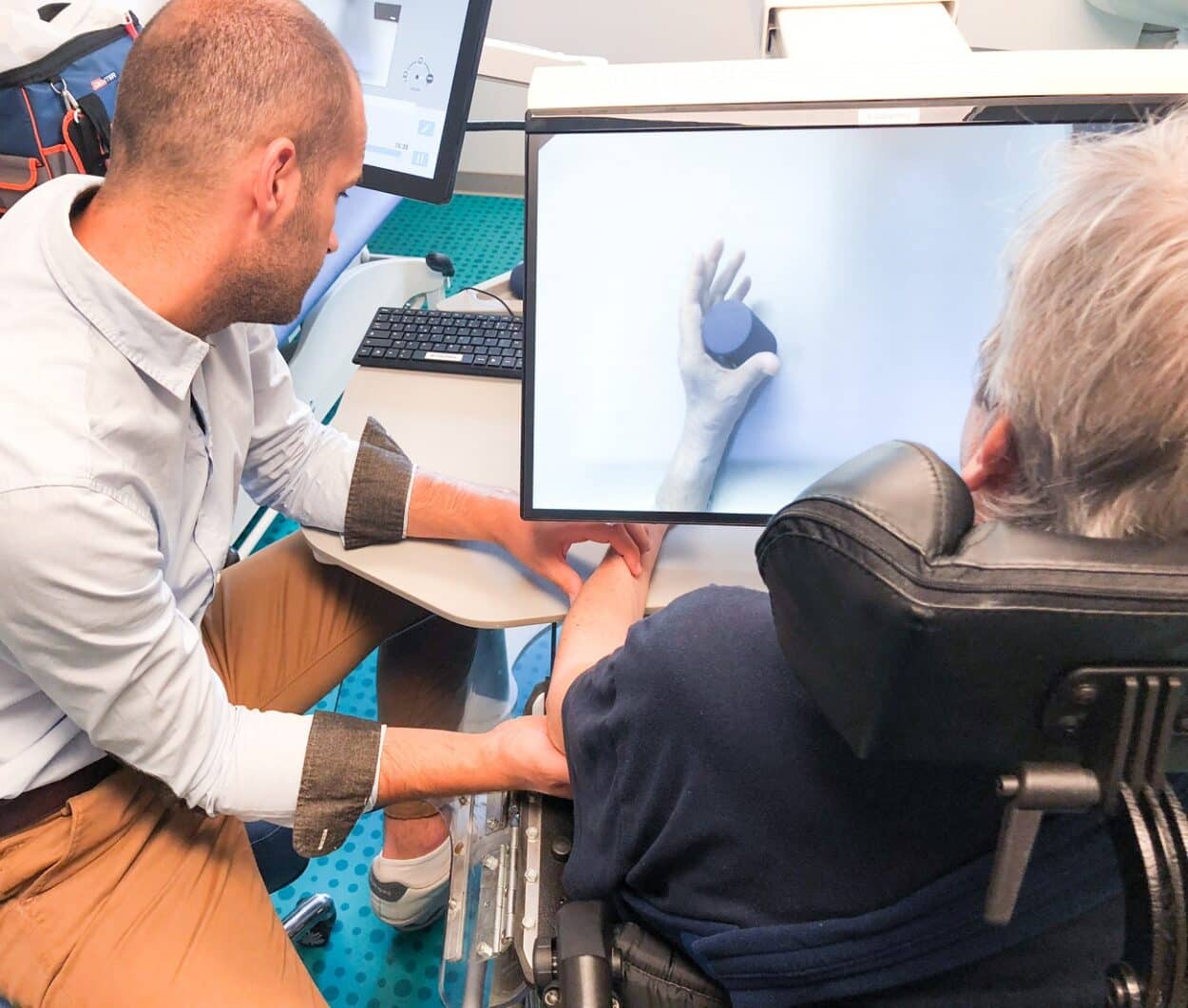

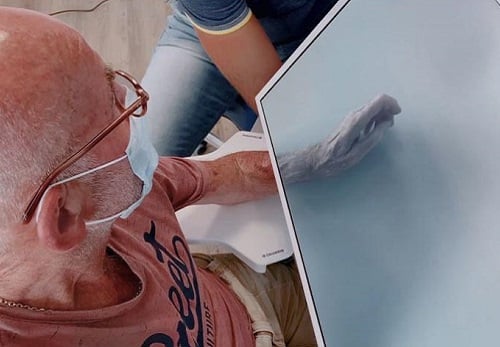
“We have therefore developed the IVS approach, a unique and patented technology, which works as follows: the mirror is transformed into a computerized tool that will capture and record, via a camera system and software, the movements made by the healthy arm.
Then the software reverses the images—a right hand becomes a left hand—and these images are projected on a screen above the pathological hand. The patient no longer has to concentrate on a complex bimanual task, but simply looks at the images of his or her healthy limb moving and imagines that his or her pathological arm is moving underneath.”
Illusion of the Brain or Power of Intention
Visualization alone stimulates the sensory-motor system and begins the patient’s rehabilitation. This creates a kind of illusion for the brain and patients say that they really feel that their deficient limb is moving again. They are convinced of this.
Professor Pascal Giraud explained:
“The simple observation of the movement via the IVS device already allows a sensory motor reactivation at the cortical level and the restoration of a coherence between the intention of the movement and this successful positive visual feedback.”

This effortless use of the power of intention will allow the brain to adapt and in a way “reprogram” itself in order to recreate connections between neurons around the injured area to gradually relearn movement. This stimulates the plasticity of the brain.
Dessintey has set up a database of 800 exercises and has created algorithms: based on an evaluation, the system proposes exercises perfectly adapted to the patient’s deficiency.
Possible Applications
The main applications are post-stroke rehabilitation, chronic pain or post-amputation, especially for the lower limbs because there are more lower limb amputees than upper limb amputees, according to Nicolas Fournier.
Dessintey’s first device, IVS3, was dedicated to upper limbs and launched 4 years ago. The second device, IVS4, was for lower limbs and was released at the end of 2022. These two devices use exactly the same concept for the same pathologies. The IVS4 can be used in a seated position, in a wheelchair, or standing.
Patients can use IVS devices every day, via 15-20 min sessions for about six weeks, as a complement to conventional rehabilitation in order to further enhance and promote recovery.
Can it work for paraplegics too? At the University Hospital of Saint-Etienne, a case study is underway on paraplegic patients, particularly those with incomplete paraplegia, who may also be subject to phantom pain because they can no longer move their limbs. The device can then be used to reduce the pain.
On incomplete tetraplegia, the device can potentially allow the recovery of motor skills in the upper limbs, which can be interesting to control a wheelchair. We are in the process of starting our studies on this type of lesion at the level of the spinal cord rather than at the central level.
Dessintey has currently equipped rehabilitation centers with these devices in some 20 countries in Europe, as well as in Korea and Hong Kong.

